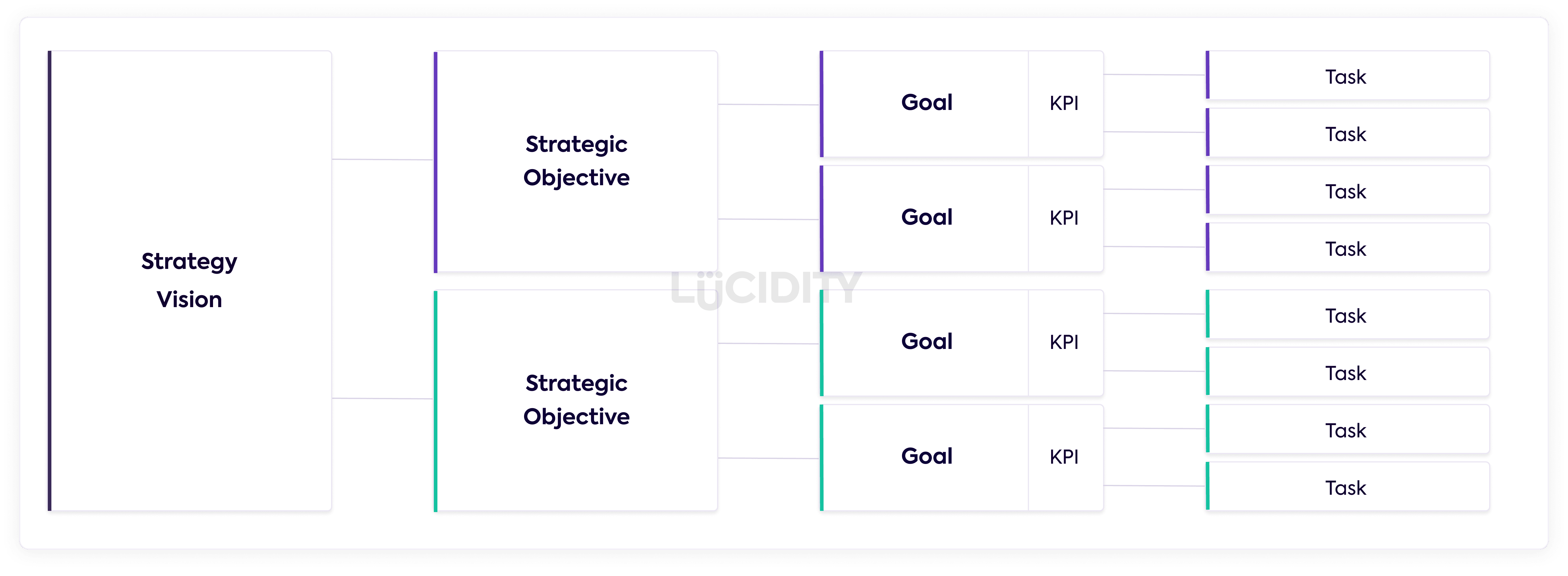A strategy as simply a collection of objectives with a plan to get from A to B. It might be that you want to grow your business in North America, or increase your online membership, or perhaps achieve an accreditation. Whatever they may be, there’s a significant amount of research out there showing companies with strategic plans are more successful, because ultimately a strategy will drive your behaviour.
And your behaviour has to change regularly for growth. Getting your first 20 customers requires different activities to getting from 20 – 100, or going from 100 – 500, and so on.
80% of SMEs don’t have a strategy. Our own benchmarking report, looking at hundreds of SMEs, showed there was a concern around the process or knowledge required.
In this article we’re going to show you three tips, three tools and three traits that are used by companies successfully scaling their growth. Some of these will be academic, others more practical. Let’s start with the tips.
Three Strategy Tips
Number 1: Develop a Vision Statement
A Vision statement is the guiding star of your company strategy. It’s a sentence or two that describes your overall vision for the way your business will change the world. Done well, it’ll inspire and engage your team and customers.
On average a Vision is 18 words, normally one sentence, and if you’re looking at an American statement it’ll likely be 15% bigger, much like the portion sizes over there. Good Vision statements are emotive and engaging – like this one from the Alzheimer’s Association. “A world without Alzheimer’s” is beautifully simple and very emotive statement.
By contrast, Bad Vision statements are not believable. For example, “To sell food in a fast, friendly environment that appeals to price conscious, health-minded consumers…” is from KFC. The same year KFC said they appeal to health-minded consumers is the year they launched a burger where the bread had been replaced with fried chicken.
If you’d like to learn more check out our Ultimate Guide to Vision Statements.
Number 2: Have a strategy
When looking at SMEs the largest reasons behind not having a strategy is lack of expertise, skills or money. None of these should be a barrier, for a strategy can be very simple.
There’s an easy to follow structure. A Vision statement, followed by strategic objectives.
Strategic objectives are the biggest consideration in your strategy. Keep them high level and have around 3-6 in total. For a company they would normally be in areas around Financial, Customer, Operational, Team and Growth. For example, a growth objective might be to enter a new market, or a people objective might be to develop a skilled workforce. Customer objectives could include reducing churn.
Under your strategic objectives sit your Goals. Goals are the metrics you use to measure your objectives, items like Revenue, Number of Customers, or Customer Satisfaction. On the next level down sits your operational tasks, these are the day to day activities that support your objectives and goals.
When placed together you have a strategy tree and a clear guide for everyone to understand where the key focus is, from the top conceptually vision through to the operational day to day tasks in the business.
Number 3: Develop Partnerships
Partnerships are where two companies work together in a win-win situation. When you find the perfect partner they can expand your market access, give you new capabilities, help you compete and compliment your product or service.
For example, Socket (name changed) was a successful UK software platform, they were actually market leading in the UK. When they went to the USA it was discovered that the expectation was the software would come with a service wrap that Socket couldn’t provide. After a few years of trying to grow, they partnered with a company to provide the service, and saw significant growth in the year to follow.
There are two types of partnerships.
Commercial partnerships – these are businesses that you have a formal engagement with, often where you are both providing benefit to each other, and where you need to work hard to establish good relationships to progress the deal. In this situation you should look for companies the same size or slightly bigger, with the same type of client, who would benefit from you.
Hands off partnerships – These are different, as here you’re using a service offered by the company, a common example being SalesForce, who provide their own app store for companies to upload their systems into and enabling other SF users to buy them.
In summary:
- Develop A Vision
- Have A Strategy
- Establish Partnerships.
Three Strategy Tools
In order to make the right decisions about your strategic objectives or partnerships, you need to do a bit of analysis of your market position.
There are literally hundreds of tools out there for various different situations, but today we’ll touch on three which are commonly associated to growth:
Five Forces
Five Forces is a way to map out the profitability, potential and risk of your market. It looks at six areas that impact your business and helps you decide if their impact is high, medium or low. If all forces are low, you’re in a strong position. If all forces are high, you’re in a weak position. The reality is likely to be something in the middle. Take a look at our guide to Five Forces to review this tool in more detail.
PESTLE
The second tool is called PESTLE and stands for Political, Economic, Social, Technical, Legal and Environmental. It’s a matrix that allows you to collect different elements that will impact your business in one place, and although hard work, is really effective at improving your strategic thinking. You could do PESTLE at a country level, for example looking at the UK as a whole, or at an industry level, such as the Confectionary marketplace. You can read more about this tool in our guide to PESTLE.
SWOT Analysis
Both PESTLE and Six Forces will ultimately lead in to developing your SWOT. You have probably heard of SWOT before, it is a tool that identifies your Strengths, Weaknesses, Opportunities and Threats. It’s a really effective tool that can direct your business when done well. As leaders, you need to grow strengths, reduce weaknesses, invest in opportunities and mitigate threats.
SWOT helps you identify the decisions you need to take and is one of the most powerful frameworks. Find out more in our guide to SWOT Analysis.
Working through frameworks to understand your market ultimately allows you decide your strategy, which will be key to growth and success.
Three Traits for Success
Finally, let’s look briefly at three traits across businesses that have scaled their growth successfully.
Number 1: Stay Focused and Adaptive
Your planning is an ongoing activity, be bold, and data driven. Use your tools and analysis to drive the company forward.
Number 2: Monitor progress
Make sure you’ve the right balance of skills and understand where you need to adapt based on your metrics. Don’t look backwards and make sure you celebrate your successes. Monitor the right KPIs in a KPI Dashboard, and align this to your overall strategy.
Number 3: Communicate well
Be relentless, interesting, simple and engaging. Good examples include weekly updates to the team from a CEO, company meetings around your strategic objectives, wall art or decoration around your goals. These can all help. Finally, be positive and upbeat.
Having a strategy aligned to the right KPIs in the company will help you grow successfully. These tools, tips and traits are a helpful start but remember your strategy will evolve overtime, as will the tools you use. If you need further help check out our strategy software!
Good luck and enjoy the process! 👍
Need help building your strategy?
Our strategy software makes it faster and easier to formulate a strategy, manage the execution and track the results. Book your personal demo and get a strategy plan template tailored to your organization.













